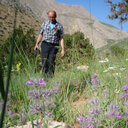Antimutagenic and anti-oxidant activities of isoflavonoids from Belamcanda chinensis (L.) DC.
Keywords
Abstract
The isoflavonoid fractions obtained from a methanolic extract of Belamcanda chinensis (L.) DC (syn. Iris domestica Goldblatt & Mabb.) rhizomes inhibited the chemically induced mutations in Salmonella typhimurium TA98 and TA100 in the Ames test. We have studied direct mutagenesis induced by N-nitroquinoline, and indirect mutation induction caused by metabolically activated 2-AF. The fractions enriched in isoflavonoids, obtained by sequential liquid-liquid extraction with diethyl ether and butanol, followed by ODS column separation, inhibited indirect mutagenesis in TA98 almost completely. In TA100 the maximum inhibition ranged between 80% and 100% depending on the test fraction. The inhibition of direct mutagenesis was lower, reaching about 50% in TA98 and in TA100, but it was dose-dependent only in the latter strain. Three in vitro anti-oxidant spectrophotometric assays-DPPH free-radical scavenging test, the phosphomolybdenum assay, and the linoleic acid peroxidation assay were also performed to support the process of bioactivity-guided fractionation and to provide more information about the potential mechanisms of action of the herb under study. The isoflavonoid fractions have the capability to scavenge free radicals, to reduce transition-metal ions and to protect polyunsaturated fatty acids from peroxidation. The analysis of the fractions obtained with high-performance liquid chromatography with photodiode-array and mass-spectrometric detection revealed several potentially bioactive isoflavones, either as glycosides or aglycones, depending on the polarity of the solvents used for fractionation. The main compounds were tectoridin and iridin in the glycoside fractions and the aglycones irigenin, tectorigenin, and 5,6,7,3'-tetrahydroxy-4'-methoxyisoflavone. The activities reported here can be regarded to be of additional value when using this plant as a phyto-estrogenic and chemopreventive agent.


